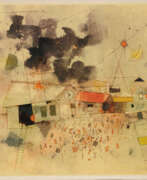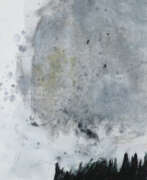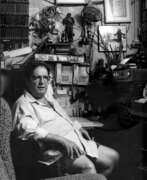Israel Abstract Expressionism


Moshe Gershuni (Hebrew משה גרשוני) was an Israeli painter and conceptual artist. He was born in Tel Aviv, Israel and studied art at the Avni Institute of Art and Design in Tel Aviv.
Gershuni's early work was characterized by abstract expressionism and gestural painting, but he later turned to conceptual art, exploring themes of identity, memory, and politics. He often used text, photography, and found objects in his works, which were highly personal and expressive.
Gershuni was also a prominent member of the Israeli art community, and he was involved in various cultural and political movements. He was a vocal critic of Israel's treatment of the Palestinians and used his art to address issues of conflict and human rights.
In 1995, Gershuni represented Israel at the Venice Biennale, where he presented a series of works that addressed the Holocaust and the Israeli-Palestinian conflict. He continued to exhibit his work extensively throughout his career, both in Israel and internationally.
Gershuni's legacy as an artist is significant, and his work has been the subject of numerous exhibitions and publications. He is regarded as one of the most important Israeli artists of the 20th century, and his influence on the development of Israeli art and conceptual art more broadly is widely acknowledged.
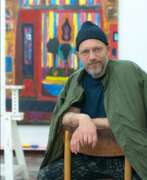

Tal Rosenzweig, known as Tal R, is a Danish contemporary artist of Israeli origin.
Tal R studied painting at the Royal Danish Academy of Fine Arts. In 2001 he received a studio grant from the city of Mönchengladbach. Since 2005 Tal R has been teaching at the Dusseldorf Academy of Art.
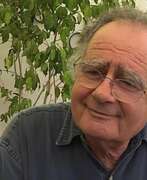

Micha Ullman (Hebrew: מיכה אולמן) is an Israeli sculptor and professor of art.
He taught at Bezalel Academy in 1970-1978. He became a visiting professor at Academy of Arts Düsseldorf in 1976. He taught at the University of Haifa from 1979-1989. He was appointed Professor of Sculpture at the State Academy of Fine Arts Stuttgart from 1991 to 2005.
Ullman created the underground “Empty Library” memorial on Bebelplatz square in Berlin, where the Nazi book burnings began in 1933.
Ullman creates subterranean sculptures, some of which barely protrude from the ground. They touch on universal themes such as the meaning of place and home, absence and emptiness. They have been described as simultaneously "celestial and earthbound, metaphysical but sensual and tactile.
